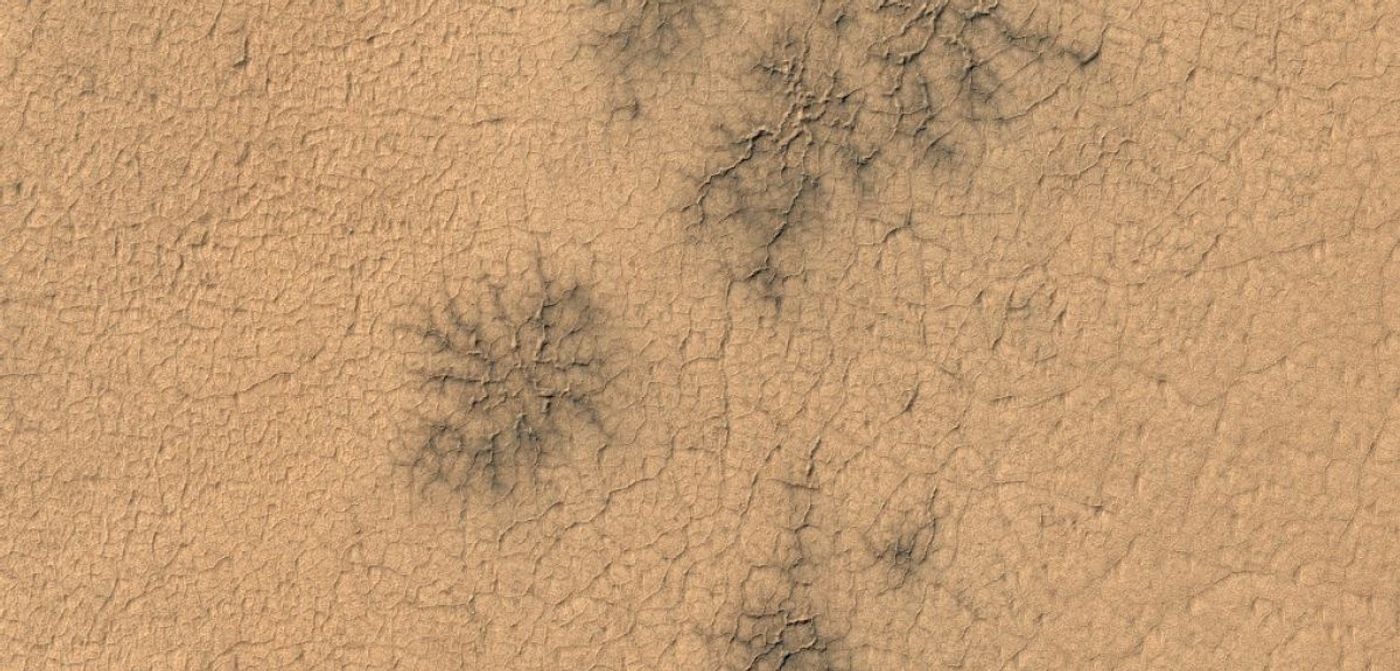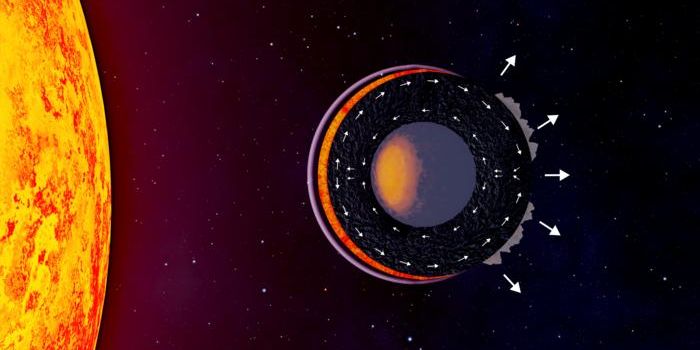Martian Araneiforms Spotted Where We Least Expected to Find Them
If you were to observe the South pole of Mars, you would see lots of dark spider-shaped landforms known as araneiforms.
Image Credit: NASA/JPL/University of Arizona
These araneiforms appear on the ground there because of naturally-occurring dry ice thawing below the surface as the season changes. When carbon dioxide gas escapes from the ground, it erodes the surrounding landmass, leaving behind the eerie and dark spider leg-like cracks you see above.
While we’ve studied araneiforms for several years and observed their continuous growth for the very first time earlier this year, astronomers have now found that it’s possible for araneiforms to exist in Martian regions never thought possible.
Published in the journal Icarus, University of Oxford researchers credit four volunteers from Zooniverse’s Planet Four: Terrains project for making the discovery possible.
Related: New hotspot for potential past life found on Mars
Typically, araneiforms only appear on what’s known as the South Polar Layered Deposits (SPLD), but thanks to the latest data, we now understand that they can pop up on other polar regions of the Martian surface.
They were initially spotted much further north than expected, and astronomers validated the findings with high-resolution images snapped by the Mars Reconnaissance Orbiter (MRO)’s High-Resolution Imaging Experiment (HiRISE) camera.
“This was a totally unexpected find,” explained study lead author Dr Meg Schwamb. “By having so many eyes scouring the images, we know now that the SPLD is not the only place where spiders form. This will help us better understand the carbon dioxide jet formation process.”
Related: Will Mars eventually have planetary rings just like Saturn's?
Despite being a monumental eureka moment, the findings raise additional questions regarding araneiforms. For example, experts are now want to know just how far north they can form before the conditions are no longer suitable.
'We have added new CTX images of Mars' South Polar region to the Planet Four: Terrains website in need of review to see how far north these features may extend,' Dr Schwamb continued.
Future observations with the MRO may help answer the latest batch of questions, but having a bevy of eyes scanning the Martian surface for these features is proving very useful.
Learning how and why these spider-like formations occur is a fundamental part of understanding Mars and its alien environment. These processes can’t happen on Earth because of the chemical differences between the two planets, so it's difficult to compare to our unique world.
Source: University of Oxford









